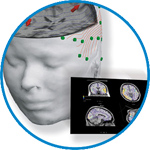- Home
- About ANT
-
Products

asa
asa is a highly flexible EEG/ERP and MEG analysis package with a variety of source reconstruction, signal analysis and MRI processing features.
.jpg)
eego mylab
The new frontier in multimodal brain research. With up to 16 kHz sampling rate, 256 EEG channels and unique software features, eego mylab gives you an unprecedented in-depth understanding of the human brain.

eego sports
eego sports offers complete freedom to collect high-density EEG data, bipolar EMG signals, and a variety of physiological sensor data, wherever and whenever required, with publish quality data in less than 15 minutes!

waveguard net
The waveguard net sets a new standard for research applications requiring high-density EEG data acquisition with quick preparation time, high flexibility, and subject comfort.

visor2
Our new and upgraded visor2 solutions integrate all the latest technologies for navigated rTMS, dual-coil navigation support, EEG-TMS recordings and pre-surgical evaluation for the highest quality in research and clinical procedures.

powerMAG ANT
The PowerMAG ANT 100 rTMS stimulator is designed for the specific needs of high-end TMS applications. Powerful high-frequency TMS as well as high precise single pulse and repetitive pulse protocols are combined in one single device.

xensor
xensor offers the solution for digitization of 3D electrode positions. xensor takes care of the whole procedure; it records, visualizes and stores positions acquired with a dedicated digitizer.

waveguard original
waveguard original is the cap solution for EEG measurements compatible with fMRI, MEG and TMS system. Use of active shielding guarantees performance in even the most demanding environments.

waveguard connect
waveguard connect EEG caps are a perfect match for hospitals and institutes aiming at reliable EEG, maximum uptime and great patient comfort! For optimal signal quality, the electrodes are made of pure, solid tin.

waveguard touch
waveguard touch is a dry electrode EEG cap. The unique Ag/AgCl coated soft polymer electrodes provide stable, research-grade EEG signals while maintaining subject comfort. The combination of these innovative dry electrodes and the industry-leading waveguard cap makes waveguard touch the best solution for dry EEG.

smartmove
smartmove allows planning of a complete TMS session ahead by defining stimulation sites based on anatomical MRI information and functional information like fMRI, PET or EEG/MEG.
Stay - References
- Support
- Events
- News
- Contact Us
You are here
Effects of individual alpha rTMS applied to the auditory cortex and its implications for the treatment of chronic tinnitus
Effects of individual alpha rTMS applied to the auditory cortex and its implications for the treatment of chronic tinnitus
An increasing amount of studies apply repetetive transcranial magnetic stimulation (rTMS) to treat chronic tinnitus, yet the neurophysiological impacts have remained largely obscure. Several studies show that endogenous brain rhythms may be enhanced via diverse brain stimulation techniques applying rhythmic stimulation. Here, we investigated in normal hearing participants whether application of rTMS (left auditory cortex) with an individualized alpha frequency was capable of increasing alpha activity in stimulated auditory regions in a sustained manner. Behavioral intensity discrimination performance worsened for the rTMS group as compared to Sham. Electroencephalography (EEG) data, however, clearly show that this functional inhibition is not accompanied by increases of auditory cortical alpha. Even though more pronounced power reductions for the rTMS group were observed at slower frequencies (delta to theta range) at stimulated and other sites of the left hemisphere, they were unrelated to behavioral changes. Our results also strongly suggest that the amount of power modulations at these slower frequencies is strongly dependent on pre-rTMS power, thus supporting current state-dependency notions. Strong relationships to behavioral changes were in particular observed for anterior cingulate cortex (ACC) beta power and posterior cingulate cortex (PCC) beta connectivity. Moreover, these beta band measures were strongly inter-related and when viewed together specifically sensitive to behavioral changes in the rTMS group. We conclude that currently alpha frequency rTMS is not a promising avenue for the treatment of chronic tinnitus and that beneficial effects could be mediated via nonauditory systems. Our study argues for the value of combined EEG-TMS studies when investigating the impacts of rTMS. Hum Brain Mapp, 2012. © 2012 Wiley Periodicals, Inc.

 Read more
Read more.jpg)




